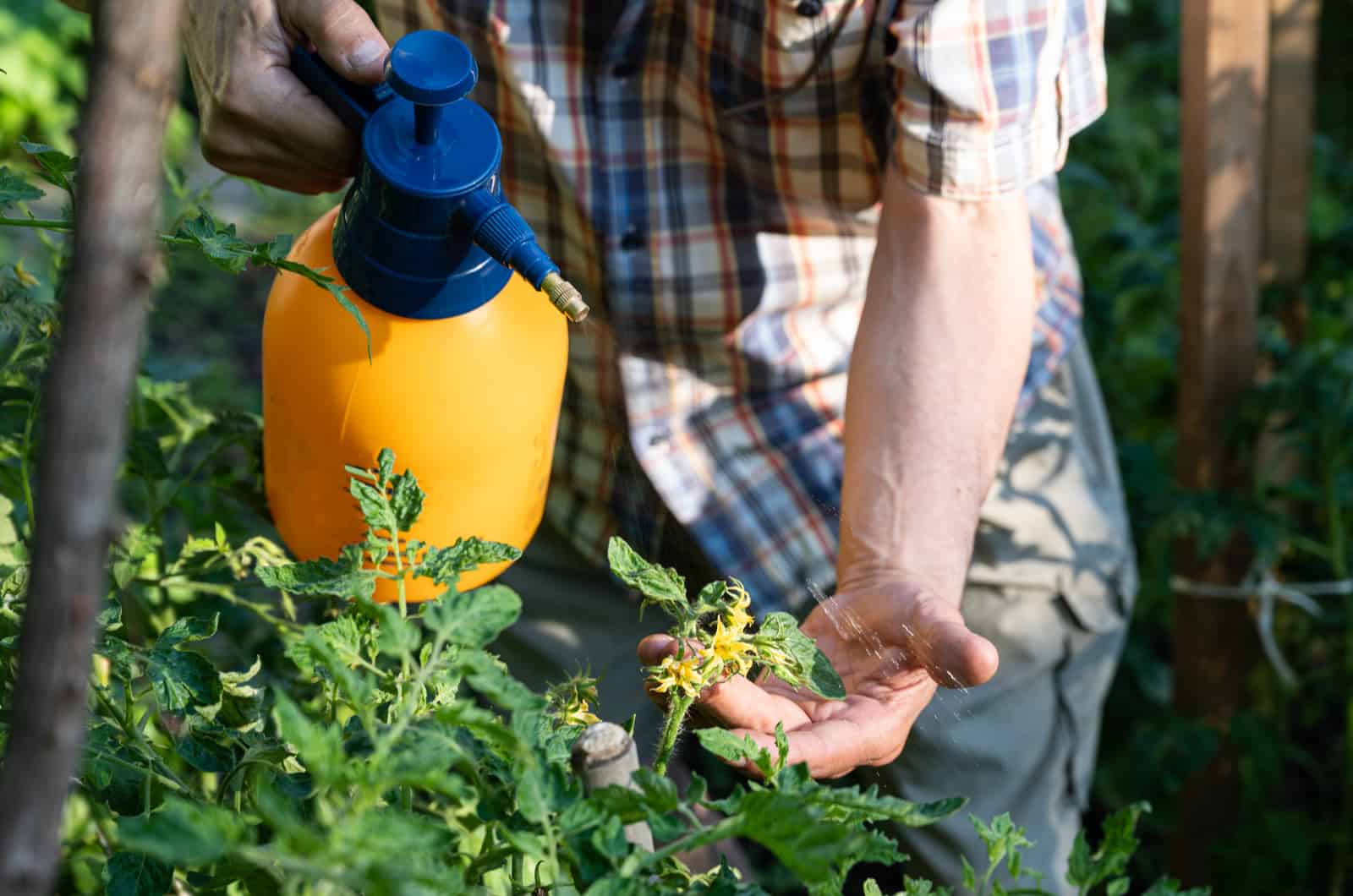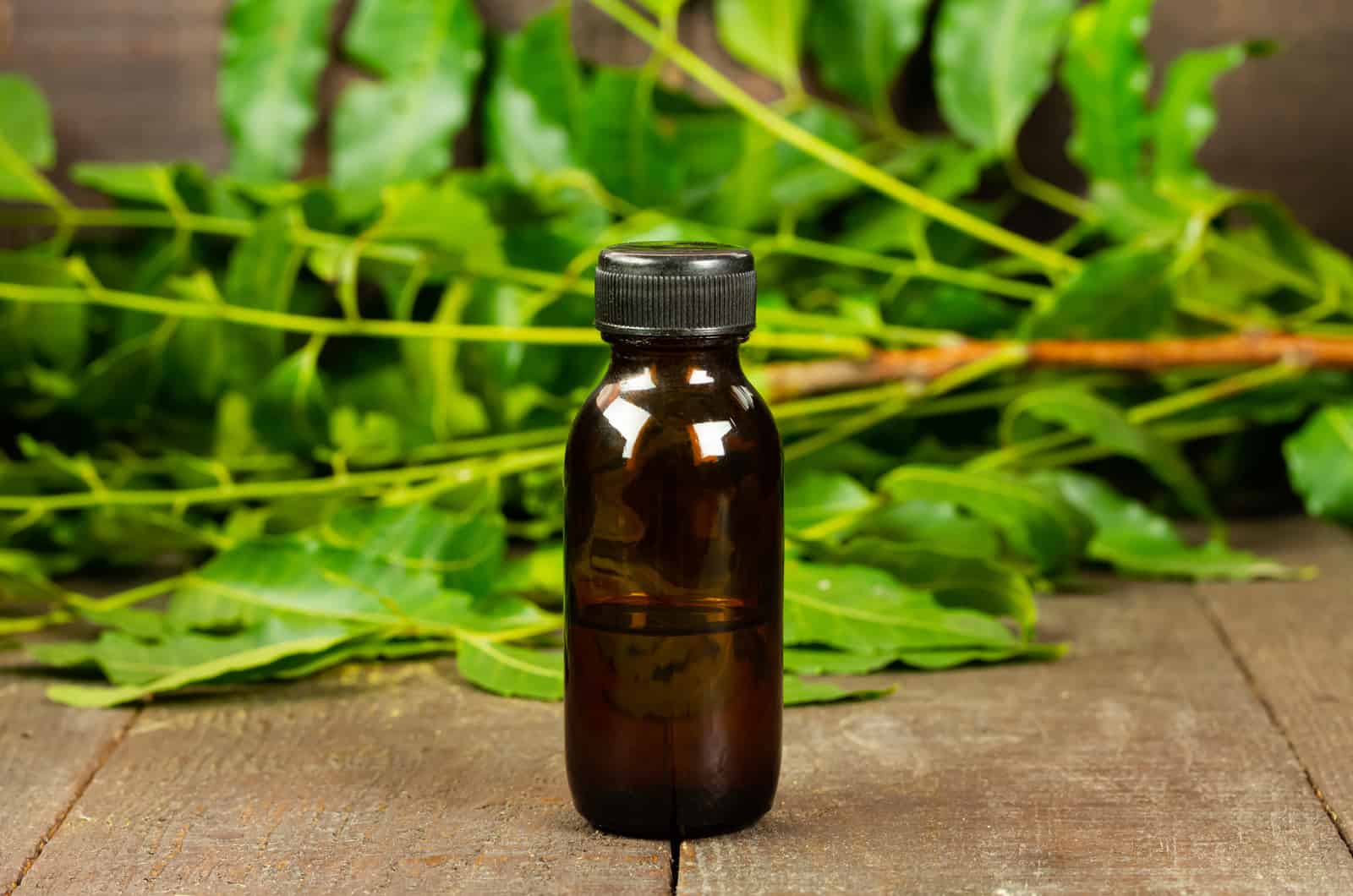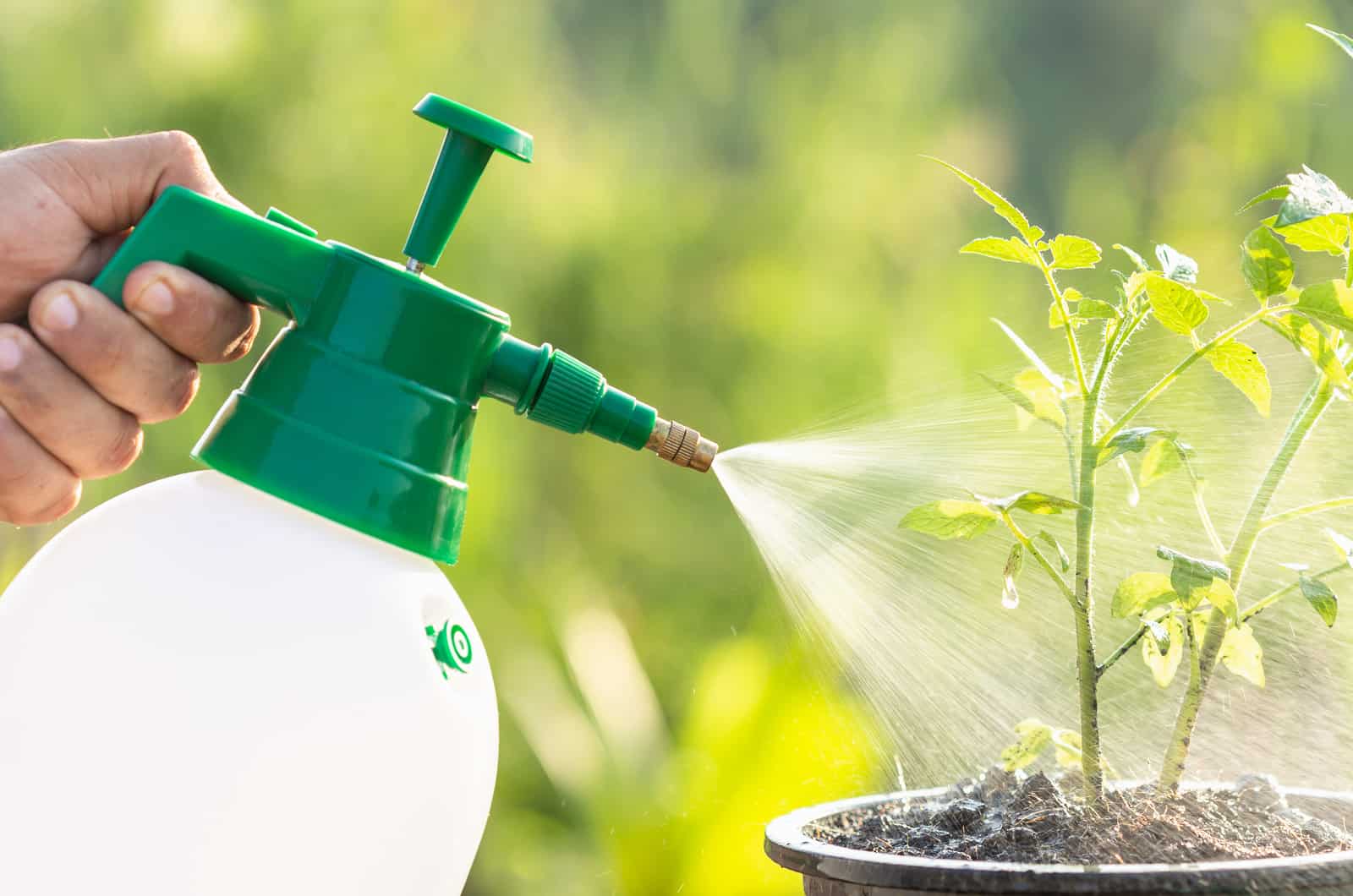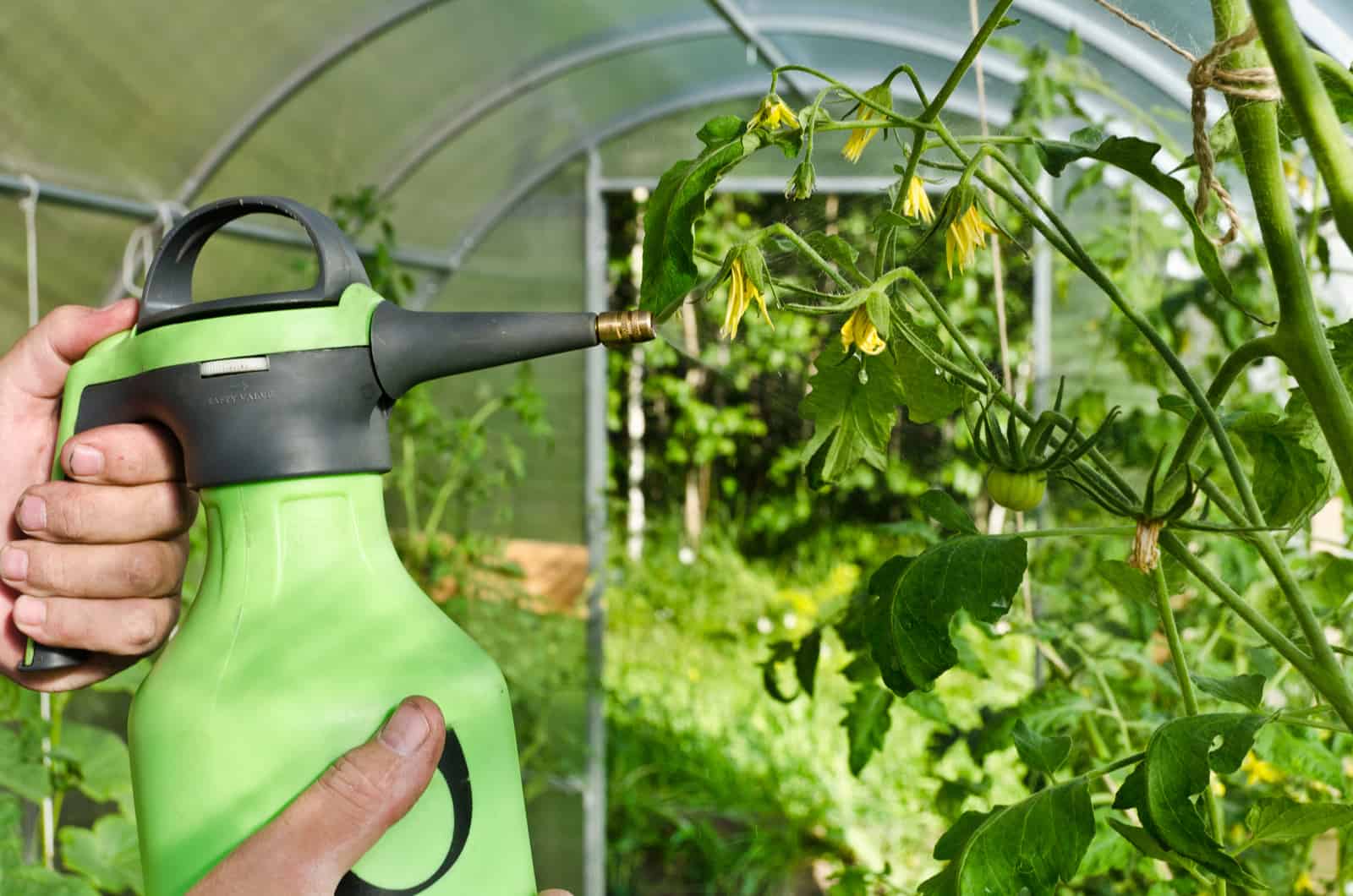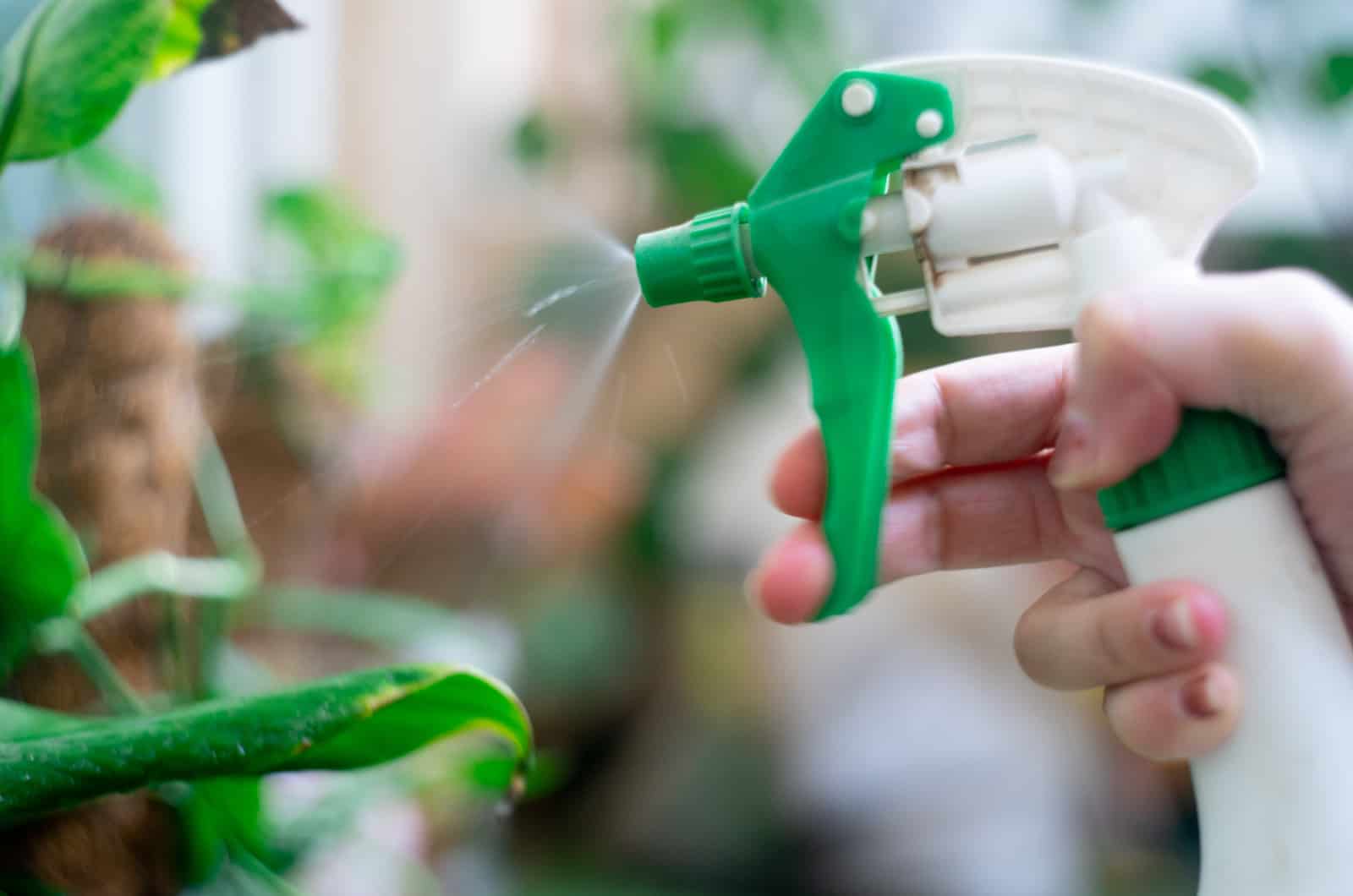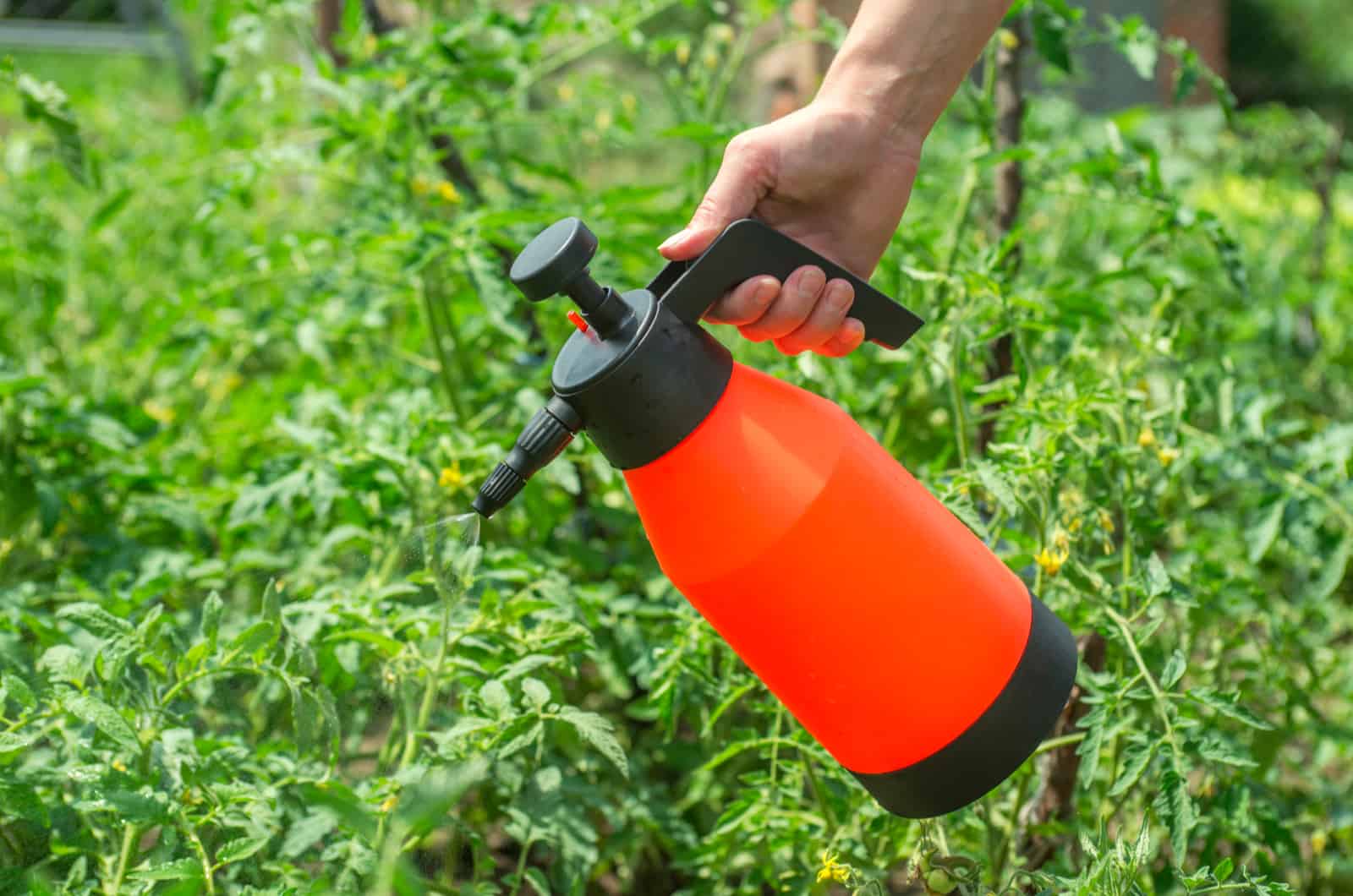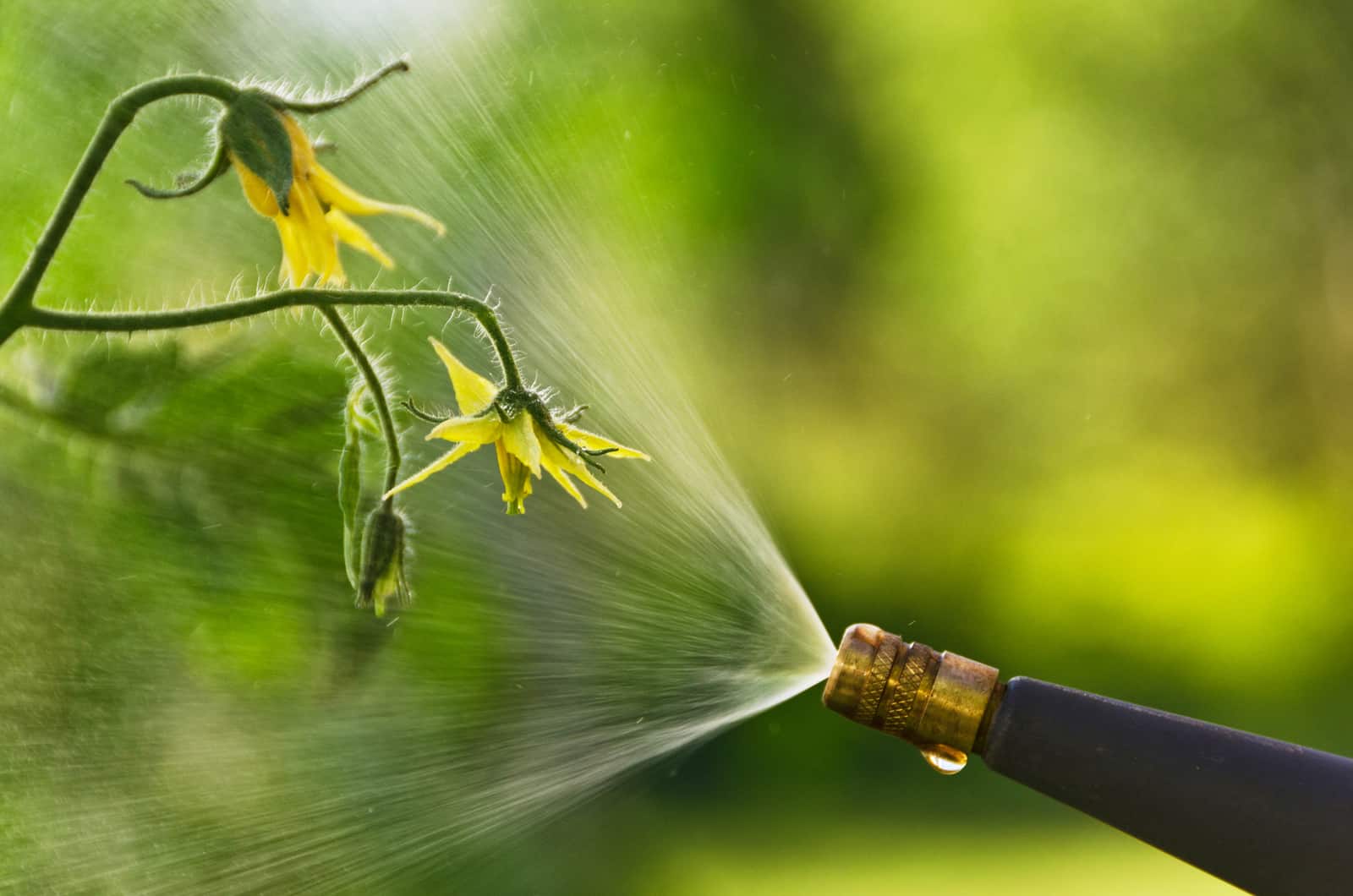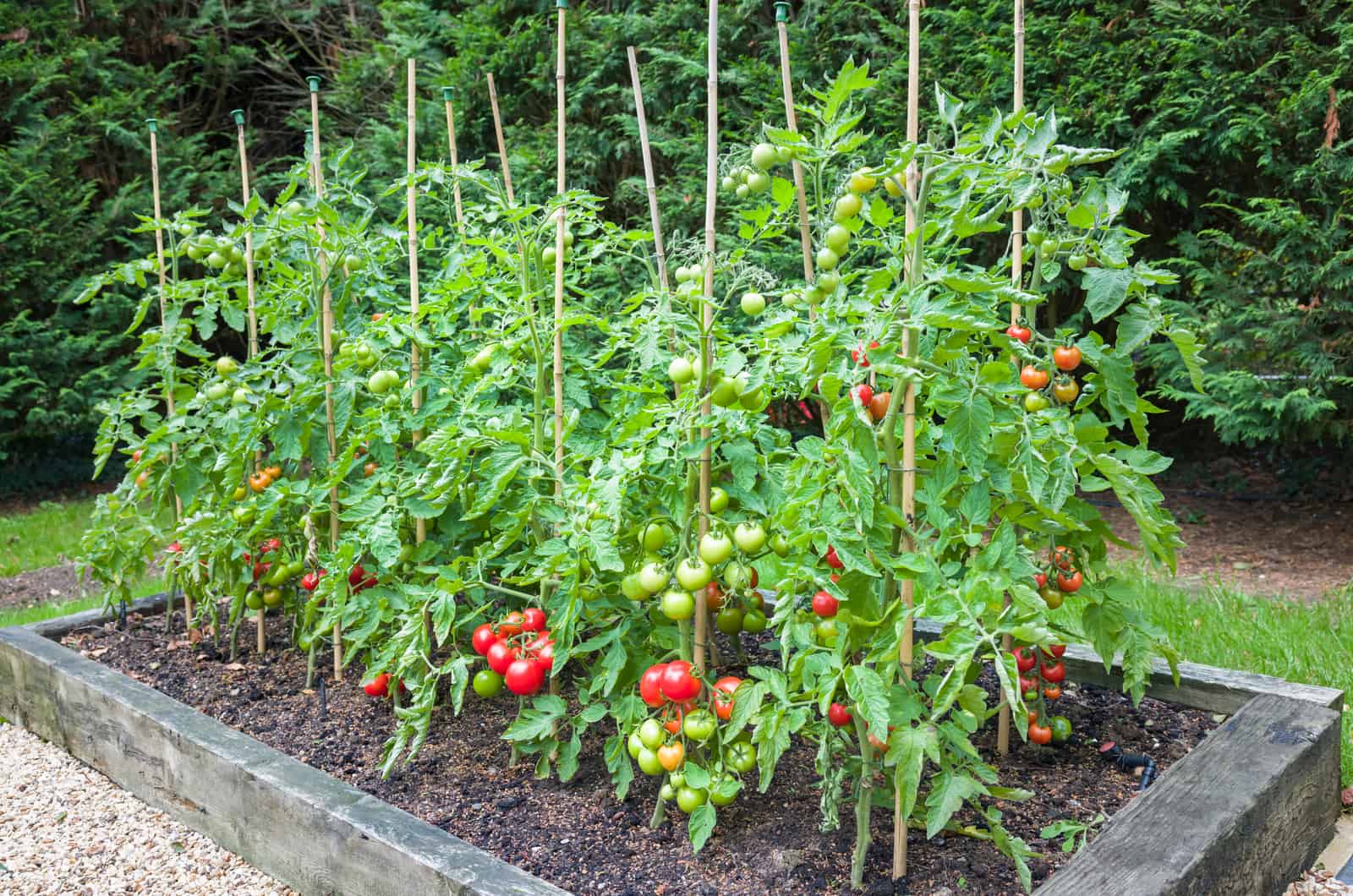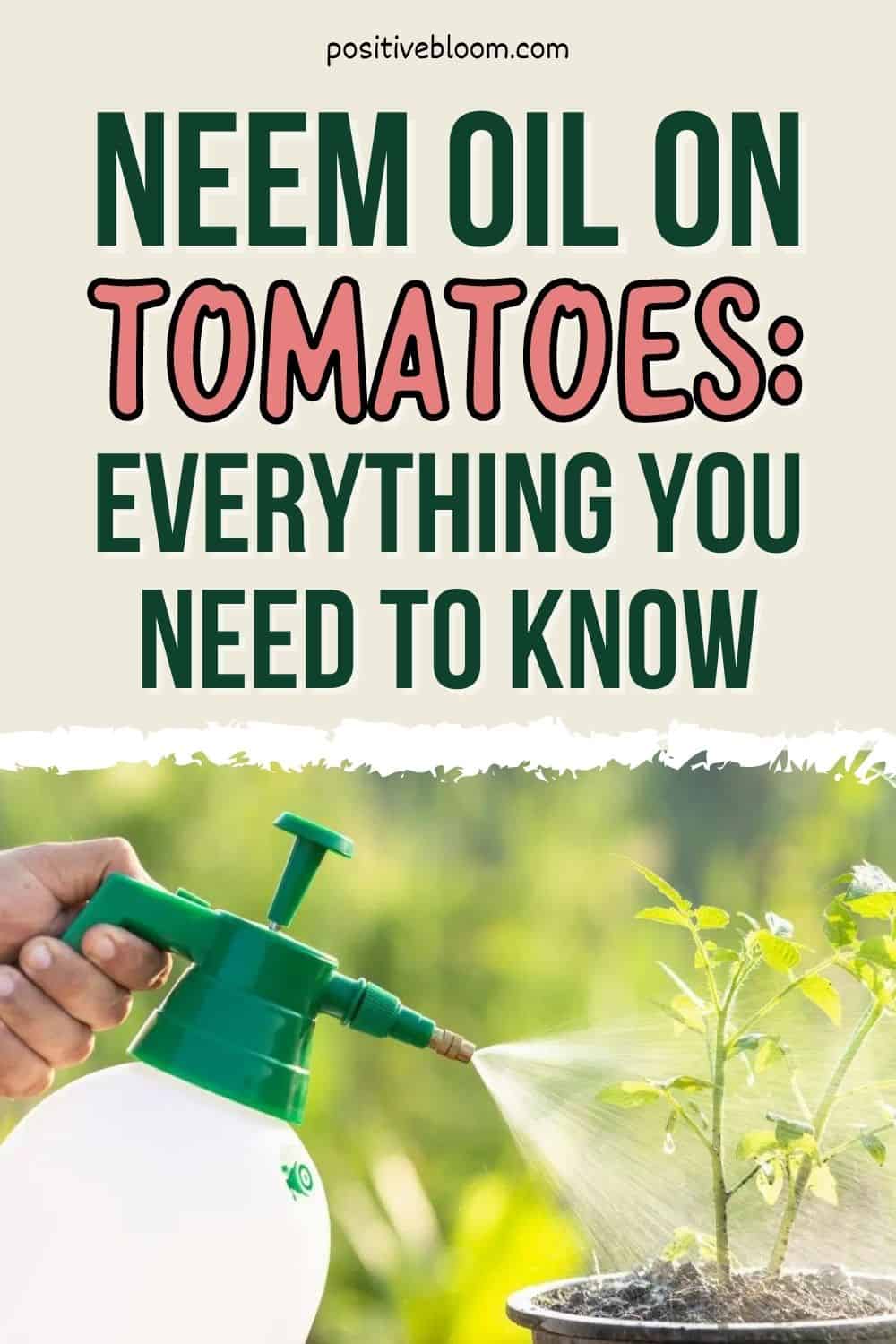When researching certain plants and how to care for them, you will often come across the term neem oil.
I’m sure you’ve heard about neem oil as a natural pesticide, but is it safe to use on plants such as tomatoes? Neem oil on tomatoes will protect the plants from pests and eliminate them.
I wrote this article to teach you everything you need to know about neem oil, including how and when to apply it.
If you are growing tomatoes, I’m sure you would do anything to protect them.
Choosing natural methods should always be your priority, so let’s find out how to get the best out of one natural method, neem oil.
Neem Oil On Tomatoes
Neem oil is perfect for tomato plants, and your tomatoes will only benefit from it.
Before we move on, let’s discuss what neem oil is and how we get it.
The plant responsible for neem oil is the Azadirachta indica tree. The seeds of this tree contain a substance known as azadirachtin.
It’s worth mentioning that parts of this tree are used for blood detoxification and different respiratory system diseases in Asia.
This plant isn’t only utilized because of the azadirachtin concentration for gardening, but also in the cosmetic industry for making soaps and toothpaste.
Azadirachtin is a natural pest repellent and will definitely win the battle against many nasty creatures.
What Are The Benefits Of Neem Oil?
Many growers argue about which organic pesticide is better, neem oil or copper fungicide. Both have benefits, but neem oil is more nature friendly, among many other things.
Now that we know the source of neem oil, we will look at the benefits of using it. It has been proven that this substance is great for pest control during flowering, but there are some other benefits worth mentioning.
Let’s get to it!
5 Benefits Of Neem Oil On Tomatoes
The EPA approved neem oil as biopesticide due to its high success rate in pest control.
What’s so special about this particular pesticide?
1. Prevents Or Kills Insects
When you apply neem oil to a tomato plant, the plant absorbs its ingredients and passes them on to insects that feed on the plant.
There are three possible outcomes after an insect ingests neem oil:
• It can prevent insects from reaching their next growth stage.
• It can kill the insect.
• It can prevent the insect from eating your tomato again.
Neem oil has the ability to kill insects no matter the growth stage. Additionally, this insecticide will help you destroy insects no matter where you grow tomatoes – in pots, in your yard, or in a greenhouse.
If you want to get rid of soft-bodied insects such as scales, thrips, aphids, mealybugs, whiteflies, caterpillars, and spider mites, use neem oil. Additionally, you can get rid of the leafhoppers and tomato hornworms both in the early growth stages and when they mature.
Most of these insects’ larvae hide on the leaves’ undersides, but don’t worry because neem oil kills even larvae.
Neem oil rarely affect beneficial insects or pollinators like bees and ladybugs. However, don’t risk and experiment. When you spot these insects, cut back on using neem oil for a while.
2. Neem Cakes Act As Fertilizer
Neem oil is efficient against insects, but did you know that it can also be used as fertilizer?
This type of plant food is known as organic fertilizer. It contains a significant quantity of the 3 elements important for tomato growth: Nitrogen, Phosphorus, and Potassium.
One of the most common problems for gardeners is a high concentration of Nitrogen in tomato soil. However, neem cakes fix this problem by lowering Nitrogen release.
This is a great feature because some fertilizers contain higher Nitrogen content. When used in combination with neem oil, these fertilizers become perfectly suitable.
Despite the fact that neem cake slowly distributes nutrients into the soil, it does not leach toxic metals, which is a concern with some fertilizers that contain chemicals.
Earthworms are beneficial organisms found in soil. When you apply neem oil to a plant, it becomes food for earthworms.
Additionally, neem oil fights back against pathogens found in plant soil.
3. Neem Oil Acts As Fungicide
Another benefit of neem oil is that it acts as a fungicide.
Here are some of the most common fungal diseases that affect tomatoes, but which don’t stand a chance against neem oil:
1. A fungus, Septoria lycopersici, is responsible for one of the most common tomato diseases, Septoria leaf spot (black spot).
2. Phytophthora root rot affects all plants, and tomatoes are no exception.
3. Colletotrichum coccodes fungus is responsible for a very common disease called Anthracnose.
4. Alternaria solani fungus causes early blight, a disease that can affect all parts of the tomato plant.
5. Leveillula taurica fungus is responsible for powdery mildew on tomatoes.
4. Neem Oil Eliminates Nematodes
When you grow plants for an extended period you will come across many different issues, even if you pay great attention to tomato plant care.
One such problem is the notorious nematodes. These creatures slowly eat the roots and can be lethal for plants.
It can be difficult to get rid of them because most chemical insecticides are ineffective, especially if nematodes spend a significant amount of time in the root system.
Neem oil contains organic chemicals, triterpenoids, and isoprenoids. After neem oil decomposes, it releases compounds that instantly kill nematodes.
5. Perfect For Indoor Plants
Many growers decide to cultivate tomatoes in greenhouses, and using neem oil for potted tomatoes can also be a great way to deal with pests.
However, tomatoes are not the only potted plants you can use neem oil on; almost every houseplant may benefit from it.
If you own a cat or dog, don’t worry because neem oil doesn’t affect pets.
How To Apply Neem Oil On Tomatoes
Before I show you the entire process of how to apply neem oil, there are some things I would first like to discuss.
Many growers ask if it’s better to purchase ready made neem oil spray or go with a DIY version. I always recommend doing it yourself. Here is how!
Prepare Ingredients
The first thing you should do is purchase cold-pressed neem oil concentrate.
To make neem foliar spray you will need neem oil, water, and soap. The best thing would be to use liquid soap as it saves time and requires less effort.
Go with an organic liquid soap as there is no need for any chemicals. Remember, you are making a completely organic solution!
One more thing you need to purchase is a garden sprayer. I don’t recommend buying big sprayers because it’s best to use all the neem oil at once.
Identify The Culprit
Remember that prevention is the best remedy, but if some pests do end up infesting your tomatoes, spotting them in good time will increase the success rate of neem oil.
You should first identify the pest you are dealing with. Although I am not a big fan of social media, it does come in handy in this case. Many gardeners look for advice on social networks, and the real experts are willing to give the answer.
The reason you should identify invasive pests as soon as possible is because early detection leads to early treatment, and the sooner you start fighting back the better.
Remove Affected Leaves
Curly and dry tomato leaves may be a sign of a more severe infestation. These leaves create a perfect environment for pests to hide and go unnoticed.
Therefore, the first thing you should do is remove any affected leaves. No dead or discolored leaves should stay on your tomato.
Removing the leaves will not damage the plant. Tomatoes are hardy plants and will recover quickly.
However, here is an excellent garden tip: when removing the leaves, try to stay away from the main stem. If you accidentally damage it, it could affect tomato growth, and luckily, it won’t affect crop production.
The question is, what will happen to your tomatoes if you don’t remove the affected leaves? As you may know, the leaves receive nutrients from the root system. When the leaves are affected, the roots will keep sending nutrients and use them unnecessarily.
Additionally, it will prevent neem oil from reaching the healthy parts of the tomatoes.
Prepare & Apply Solution
I already mentioned that there is no need to make too much neem oil solution, but how much do you actually need?
For example, if you have less than four affected tomatoes you will need a half gallon spray bottle.
Fill a half gallon spray bottle with water and add 1 tablespoon of neem oil concentrate and 2 teaspoons of soap.
Before applying the neem oil, determine how severe the infestation is.
In severe cases, apply the solution every 5 days and continue doing so for a month.
The best idea would be to use the entire amount of neem oil immediately after preparing it. This is because neem oil contains compounds that will break down immediately after they come into contact with water and soap.
The longer it sits, the less effective it becomes. However, if you accidentally forget to use it you can apply it as a soil drench.
I’m sure you are now wondering if this solution affects crops as it can be applied to the soil.
Don’t worry, you used organic ingredients such as neem oil and organic liquid soap!
When To Apply Neem Oil
Although it may sound like a good idea to apply this solution in the early morning, it actually isn’t.
Oils don’t get on well with high temperatures, and the same goes for neem oil and midday heat. It’s best to use it in the early evening or late afternoon.
It may seem self-evident, but don’t apply neem oil if it’s windy unless you want it to end up all over your face.
Although there is a small possibility that neem oil can harm your skin, I wouldn’t risk it. However, if it gets in your mouth I highly recommend you go to the emergency room immediately.
Is Neem Oil Safe For Plants?
You can apply neem oil to tomatoes in your vegetable garden without worrying about it affecting the quality of the crop.
In other words, neem oil is completely safe to use during the growing season up to the harvest.
I mentioned earlier that neem oil should not be ingested, so how is it safe? It is only harmful if ingested directly as it may dissolve in the digestive system.
On the other hand, it won’t affect your veggies in any way. In other words, neem oil will dissolve before consuming the crop.
FAQs
What plants should you not use neem oil on?
Never spray neem oil on herbs like parsley, thyme, cilantro, dill, and basil. Also, don’t use neem oil on plants such as leafy greens as it can cause leaf burns. The most common leafy greens that may suffer from leaf burns caused by neem oil are lettuce, arugula, and spinach.
How much neem oil should you use on tomatoes?
You will need enough neem oil to cover the entire plant. However, if you accidentally pour more than you wanted, just leave it dry.
What is the chemical makeup of neem oil?
Neem tree seeds contain azadirachtin as an active ingredient. Other components include salannol, vepinin, fraxinellone, nimbin, etc. Due to the high concentration of azadirachtin, it is suitable for garden pest removal.
What type of oil is neem oil?
When we talk about neem oil, we are talking about vegetable oil. Neem oil is yellow and its scent is like garlic.
Wrapping Up
Neem oil has become popular because it is a perfect bioinsecticide with a great success rate against different garden pests.
Using Neem oil on tomatoes is completely safe, and these plants will only benefit from it.
Neem oil is also easy to prepare and use, which makes it perfect for beginner gardeners.
I highly recommend using neem oil as pest repellent if you grow tomato plants.
Until next time!
Like this post? Share or pin it for later!

